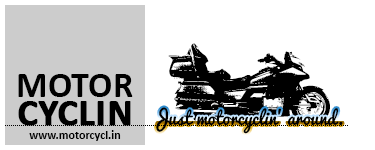The single seat set-up that lends most credibility to the cafe racer looks of the bygone era. These along with the clip on styled handlebars were the most common cosmetic mods on any machine. Written for the RD350, but adaptable for just about any bike.
The single seat set-up is something that is most impractical in India, because more often than not, the RD has 2 people on it. Except on club rides, where the riders are alone, which is also not true in all cases. Whenever the RD is taken out, you have a girl friend, a wife, a mother or someone else whom you just cannot leave behind.
This was the main thing I had in mind when I went upon working on the single seat. It had to be easy to install and remove, so that it could be done easily at home (lesser than 15 minutes to install) on the weekends. But even then it should be sturdy and not come off the bike too easily.
So keeping these in mind, this is what I arrived at. It is a seat that is not great to look at, but on par with the café racer seats that I have seen. But the seat takes 10 minutes to fix on, and is very sturdy. The seat will have to be made to suit your height and weight for most comfort, that’s the reason that I have not given any specific values.
- Take off the normal seat on your RD and remove the battery if it has one underneath the seat.{mosimage}
- Sit on the chassis and holding on to your clip-ons or low handlebars, make yourself comfortable.
- Next, make a mark where your ass would rest and that would be one of your most important measurements in this process.
- Get off the bike and measure the distance between the tank and the mark that you have made. This length that you get would be parameter (B) in Picture 01.
- Measure the width of the tank where it ends nearest to the rider and that would be parameter (A) in Picture 01.
{mosimage}So once you have done this you have the dimensions for the seating area. Next you need the dimensions for the butt-stop (the piece that stocks you from sliding backwards). Decide on how high and in what shape you want that and that would be parameter (C) in Picture 01.
Next you need the rear seat replacement cowling. Depending on the size and the shape of (C) take measurements. If you have selected a round shape like I did, then it would be the perimeter of the semicircle that would be (D) in Picture 02. Decide on the length of the cowling.
Put the whole thing down on paper/ cardboard/ directly onto sheet metal (if you are comfortable). Once you have drawn them out leave an extra ½ inch all around so that you can fold it to avoid sharp edges and you have a place to weld different pieces together (and you’ll have a small margin for error).
- Cut them up with the extra ½ inch {mosimage}
- Shape as necessary. I made my seat a little high up front near the tank because if I ever happen to slide up real close to it, I wouldn’t want to hurt the family jewels too bad. ;o)
- Weld the pieces together.
- Keep the seat on the chassis and mark out points where you can put on receptors for nuts to keep the seat in place.
- Weld these on to the seat.
- Use sand paper and give the sharp and unsightly edges a smooth finish.
I kept the seat on for a couple of days using a polystyrene (Thermocol) sheet as padding till I was satisfied with the position.
Once you are done with it, you have two options. One is to paint the metal body of the seat and get padding just on the seating area. The other is to cover up the whole metal body of the seat with the leather and put a thin layer of foam underneath all around. This is along with the normal padding in the seating area. The latter is what I chose to go along with and looks pretty decent. I did that, because I didn’t have the patience nor did I want to invest time and money on the paint and the clear coat. So I just took it to the seat fabricator and got it done.
That’s about it!
If you find any part of this unclear or need more explanation on anything, feel free to contact me.
